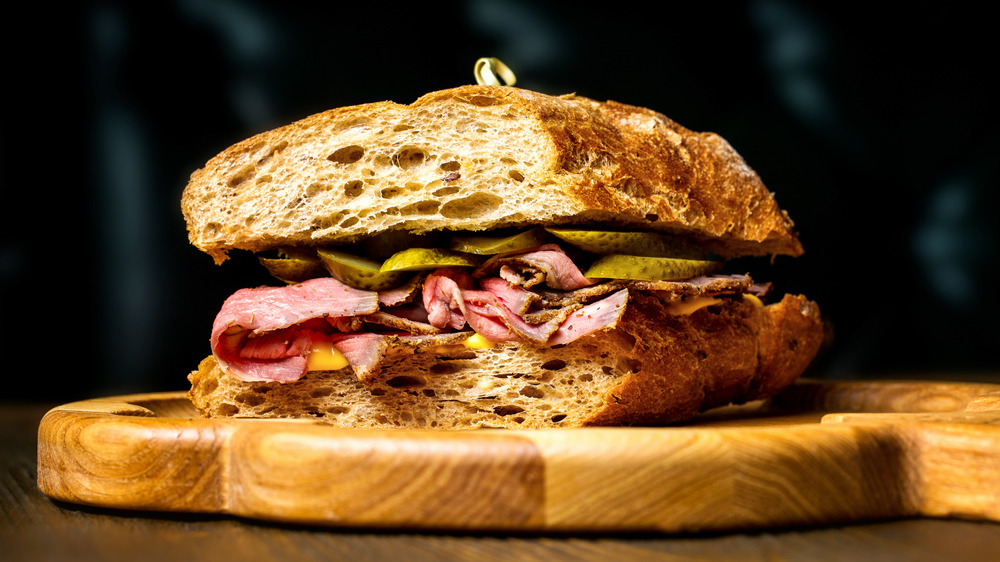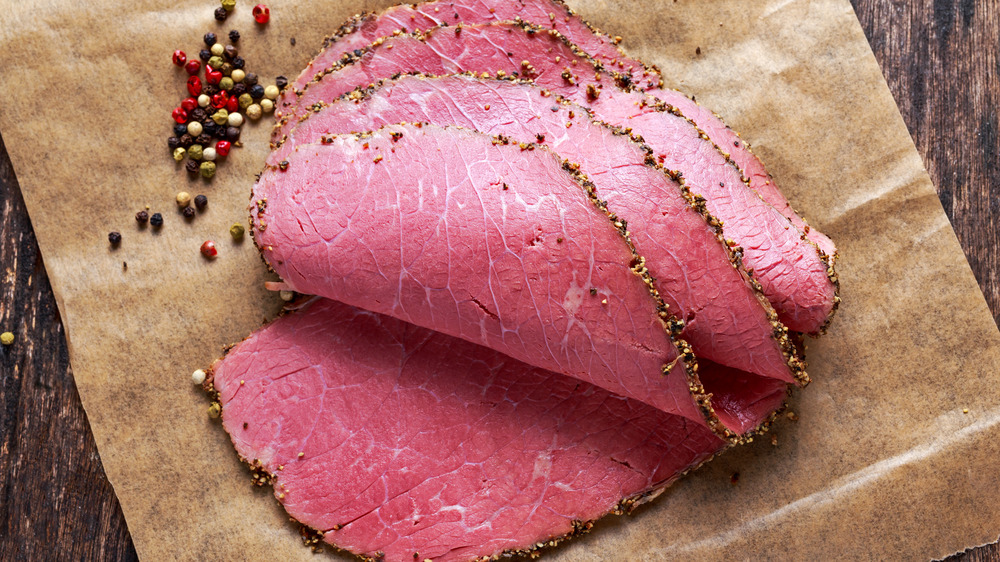This Is Where The Flavor Of Pastrami Comes From
In the world of deli meats, you have your basics (like turkey, sliced ham, and roast beef) and then you have your more exotic cuts. Among the latter is pastrami, which is often enjoyed piled high between slices of fluffy rye bread and a heavy-handed smear of yellow mustard. If you've ever eaten the Eastern European lunch meat, you know just how flavorful and unique it is, with its spicy and smoky undertones.
Often made from beef brisket, pastrami is sometimes confused for corned beef given their similar pink appearance. But one bite into a pastrami sandwich and you'll instantly realize the two meats are completely different — i.e. pastrami is bursting with flavor that corned beef lacks. But where does the popular deli meat get such a powerful taste? Here's what you probably didn't know, and what to keep in mind the next time you step up to the deli counter.
Pastrami's flavor has nothing to do with the meat itself
You might think that the flavor of pastrami comes from the brisket it's made with — but it actually comes from the process in which said meat is prepared, Taste says. In fact, the culinary site says you can technically "pastrami" any type of meat, including lamb, salmon, and even vegetables. The whole thing starts by brining the meat in a marinade of salt, sugar, and other spices for up to a week. Eater then explains that the meat is coated in a spicy mixture of coriander, pepper, mustard seeds, fennel seeds, and garlic. This is where it really gets its flavor.
It doesn't end there, either. After the spices are rubbed on, the pastrami is smoked and steamed before serving, which gives it those smoky undertones you know and love. It's a long process but well worth the flavorful sandwich filling you're left with in the end.

